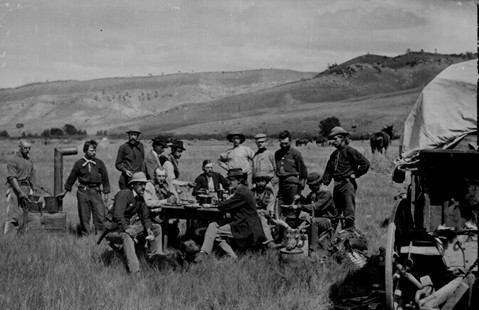 Upon reading this morning’s news that the Feds have moved against the Pagan Motorcycle Club, we cracked via Twitter that two-wheeled outlaws would do well to choose less obviously evil names. It doesn’t take a genius to wonder whether the Pagans might be up to no good; might the cops be less likely to bat an eye at the Care Bears?
Upon reading this morning’s news that the Feds have moved against the Pagan Motorcycle Club, we cracked via Twitter that two-wheeled outlaws would do well to choose less obviously evil names. It doesn’t take a genius to wonder whether the Pagans might be up to no good; might the cops be less likely to bat an eye at the Care Bears?
A close Microkhan ally responded to our jest by rightly pointing out that such a theme already exists in the motorcycle world: the existence of a mighty evangelical movement, headed by the Bikers for Christ. The organization’s amazing story can only be told through the awakening of its founder, Fred Zariczny, who experienced an epiphany after a horrendous 1973 crash:
For eight months after the accident, Zariczny began thinking about God and what life is all about. Then, on May 5, 1977, he followed an attractive young woman to the Abbott Loop Christian Center in Anchorage, where he was living at the time.
“I got stoned, and I figured I would tell them they were geeks and hypocrites,” he said recently of that day in church.
But instead, he found himself walking down the aisle for the altar call after the sermon. “I accepted the Lord, then was baptized in the water and filled with the Holy Spirit,” he said. “I did a 180 in one night.”
Though he had been a self-confessed addict and pusher from the age of 13, Zariczny, 54, said he changed his life completely that May day.
“I went home and threw out all of the drugs,” he said, adding that almost immediately he felt liberated for the first time in his life. “I didn’t need the drugs, alcohol and sex anymore, because I had peace in my heart.”
Yet that internal peace doesn’t always translate into a total renunciation of external violence. Even the saved get stabby from time to time.
Plenty more on the evangelical movement among bikers here, via Rich Remsberg’s Riders for God. In doing a quick sweep through the book this morning, what struck us most was the similarity in the conversion tales told by the various born-again bikers. Virtually all of them talk about how they were “searchers” from a very young age—not meatheads, but intelligent young men who’s rage was linked to an emptiness born out of curiosity regarding the meaning of life. And when it became clear that drugs and violence couldn’t fill that void, they turned to faith.
Though, to be frank, the book’s accounts of straight-up brutality certainly titillate:
So then I thought I’m gonna strangle this guy til he passes our. ‘Cause he was a redneck and he didn’t have no hair, so I couldn’t pull his hair back. I just, I beat this guy. He was just gone. He was out of it. The guy was nuts.
And I remember having ahold of his Adam’s apple until I could almost touch my forefinger and my thumb. I mean I was ripping his Adam’s apple out. But I remember thinking, I don’t want to kill this guy.
Lovely. We can only imagine that the victim here wasn’t able to perform the the “Tequila” dance after this particular ordeal.



 We’re in the midst of watching
We’re in the midst of watching 
 We usually care little for news of prizes—we refuse to watch the Academy Awards, for example, and we’re always hard-pressed to name the regining National Hockey League MVP. But we can’t help but take note of this morning’s news regarding our president’s
We usually care little for news of prizes—we refuse to watch the Academy Awards, for example, and we’re always hard-pressed to name the regining National Hockey League MVP. But we can’t help but take note of this morning’s news regarding our president’s 
 Upon reading this morning’s news that the Feds have
Upon reading this morning’s news that the Feds have 
 A pal of ours is on jury duty this week, and reminded us of one of the great pleasures of the process (at least in New York): getting to view
A pal of ours is on jury duty this week, and reminded us of one of the great pleasures of the process (at least in New York): getting to view 



 We can’t say we’re utterly convinced as to the verisimilitude of the
We can’t say we’re utterly convinced as to the verisimilitude of the 
 Back in March, we brought you news of mankind’s triumph over the rodent denizens of
Back in March, we brought you news of mankind’s triumph over the rodent denizens of 

